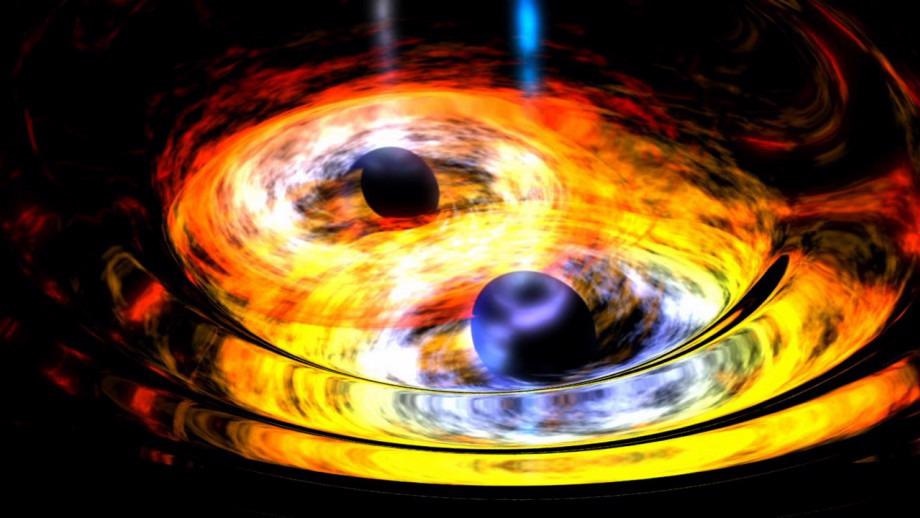A group of international researchers, including scientists from The Australian National University (ANU), have uncovered the biggest number of gravitational waves ever detected.
 Two black holes merge to become one. Image Credit: NASA.
Two black holes merge to become one. Image Credit: NASA.
The breakthrough will help resolve a few of the most complicated secrets of the Universe, such as the building blocks of matter and the workings of time and space.
The study by the international team, reported recently on ArXiv, made 35 latest detections of gravitational waves brought about by pairs of black holes fusing or neutron stars and black holes crashing together. This was done with the help of the LIGO and Virgo observatories between November 2019 and March 2020.
This brings the complete number of detections to 90 following three observing runs from 2015 to 2020.
The new observations are from enormous cosmic events, of which a majority of them are billions of light-years away, which toss ripples via space-time. They contain 32 black hole pairs merging, and possibly three collisions between black holes and neutron stars.
ANU is one of the main players in the international group, performing observations and developing advanced technology to track down evasive gravitational waves throughout the vast expanse of the universe.
According to Distinguished Professor Susan Scott, from the ANU Centre for Gravitational Astrophysics, the new breakthrough is “a tsunami” and a “major leap forward in our quest to unlock the secrets of the Universe’s evolution.”
These discoveries represent a tenfold increase in the number of gravitational waves detected by LIGO and Virgo since they started observing. We've detected 35 events. That's massive! In contrast, we made three detections in our first observing run, which lasted four months in 2015-16.
Susan Scott, Distinguished Professor, Centre for Gravitational Astrophysics, Australian National University
Scott continued, “This really is a new era for gravitational wave detections and the growing population of discoveries is revealing so much information about the life and death of stars throughout the Universe. Looking at the masses and spins of the black holes in these binary systems indicates how these systems got together in the first place.”
“It also raises some really fascinating questions. For example, did the system originally form with two stars that went through their life cycles together and eventually became black holes? Or were the two black holes thrust together in a very dense dynamical environment such as at the centre of a galaxy?” added Scott.
According to Distinguished Professor Scott, also a Chief Investigator of the ARC Centre of Excellence for Gravitational Wave Discovery (OzGrav), the constant enhancement of gravitational wave detector sensitivity was inducing an increase in the observations.
This new technology is allowing us to observe more gravitational waves than ever before. We are also probing the two black hole mass gap regions and providing more tests of Einstein's theory of general relativity.
Susan Scott, Distinguished Professor, Centre for Gravitational Astrophysics, Australian National University
Scott added, “The other really exciting thing about the constant improvement of the sensitivity of the gravitational wave detectors is that this will then bring into play a whole new range of sources of gravitational waves, some of which will be unexpected.”